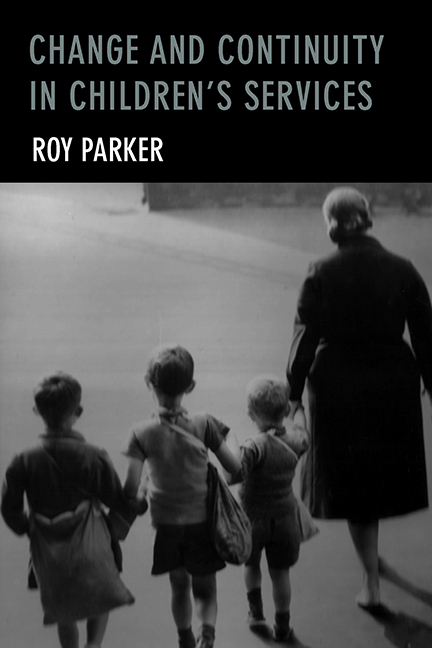Book contents
- Frontmatter
- Dedication
- Cover illustration
- Contents
- Acknowledgements
- Preface
- 1 Introduction: patterns of change and continuity
- 2 Residential child care: an historical perspective
- 3 From boarding-out to foster care
- 4 The evolution of landmark legislation
- 5 Getting started with the Children Act 1948: what do we learn?
- 6 Child care in the melting pot in the 1980s
- 7 Trends, transitions and tensions: children’s services since 101 the 1980s
- 8 Reflections on the assessment of outcomes in child care
- 9 The role and function of inquiries
- 10 Evidence, judgement, values and engagement
- 11 Emerging issues: looking ahead
- Notes and references
- Bibliography
- Index
3 - From boarding-out to foster care
Published online by Cambridge University Press: 07 March 2022
- Frontmatter
- Dedication
- Cover illustration
- Contents
- Acknowledgements
- Preface
- 1 Introduction: patterns of change and continuity
- 2 Residential child care: an historical perspective
- 3 From boarding-out to foster care
- 4 The evolution of landmark legislation
- 5 Getting started with the Children Act 1948: what do we learn?
- 6 Child care in the melting pot in the 1980s
- 7 Trends, transitions and tensions: children’s services since 101 the 1980s
- 8 Reflections on the assessment of outcomes in child care
- 9 The role and function of inquiries
- 10 Evidence, judgement, values and engagement
- 11 Emerging issues: looking ahead
- Notes and references
- Bibliography
- Index
Summary
The policies, practices and disputes that have surrounded the development of foster care go back a long way. An appreciation of that history helps to place current issues in a broader context than is commonly the case. Here, we begin at 1870 and continue the account up to about 1980, albeit only for England and Wales. These years witnessed changes in both the pattern of foster care and in the assumptions that have been made about it. At the same time much remains familiar; for example, the quest for appropriate foster parents, what best to do by way of supervision and support, questions about which children should be placed in which homes and what purpose the placement is intended to serve.
It will also be apparent that there has been a longstanding inter-relationship between foster care and residential care, with each affecting the evolution of the other. Furthermore, of course, foster care in the public sector has not stood alone. Several of the voluntary societies had boarded-out about a quarter of the children in their care by the end of the Victorian period. By contrast the private sphere of foster care has been informal and unorganised but is now moving to a more commercial footing. This has had, and will continue to have, a significant bearing upon foster care in the public arena, an issue that will be explored further in the final chapter. Likewise, the different history of foster care in Scotland warrants a separate examination although it will be touched upon in what follows.
I Boarding-out and the Poor Law in the nineteenth century
Little attention was paid to boarding-out as a method of providing for poor law children in England and Wales until the 1860s when the number of them under the age of 16 in poor law institutions rose steadily from some 43,000 at the beginning of the decade until, by 1869, it had reached an unprecedented peak of 58,000. The extra numbers, together with the growing insistence that children should be kept separate from adult paupers, confronted many boards of guardians with the prospect of having to embark upon new building programmes. Boarding-out began to find favour as a less expensive option.
- Type
- Chapter
- Information
- Change and Continuity in Children's Services , pp. 35 - 54Publisher: Bristol University PressPrint publication year: 2015



